
While at The Spot Athletics I implemented and oversaw one of the top internship programs in the country. In order to provide a better learning experience for our young coaches, I turned to my mentors on how I could do such a thing. One of the assignments I loved to use was shared with me by Mark Watts, and it’s called the Five Exercise Assignment.
According to Mark Watts, the assignment is that you must pick five and only five exercises or drills that you can use to train all of the university sports for all of the seasons. You would not need to choose warm-up, flexibility, or mobility drills. You can also leave out pre-hab exercises like the five-way neck, rotator cuff, etc.
There are a few limitations:
- You cannot use any combination lifts like the clean and press.
- You cannot use general variations (i.e. squat variations).
- Your exercises need to be equipment specific (i.e. barbell lunge versus dumbbell lunge).
- You cannot use circuits.
- Speed, plyometric, and conditioning drills count toward your five.
When I did this exercise with my interns, it wasn't the five exercises themselves that were important, but whether the interns could explain why they chose the exercise over other variations. I then proceeded to ask a handful of coaches from all levels what their top five were and why. You will notice it was hard for some coaches to pick just five exercises.
After reading this leave your top five and why you chose them in the comments.
Mark Watts
Fifth grade teacher and kick-ass father
- SS Yoke Bar Box Squat
- GHR
- RDL
- Military Press
- Chin-Up
If I am choosing just five, and they must be applied to in-season athletes regardless of sport, I would make sure I am comfortable with them implemented pre-season, during game week, etc.
This is entirely anecdotal and limited to my experience, but here goes:
- Box squatting (not squatting to a box) can alleviate soreness due to breaking the eccentric-concentric portions of the movement, along with ensuring consistent depth. The SS Yoke Bar can alleviate unwanted stress on the wrist, elbow, and other joints.
- I chose the GHR because I have documented the primary and secondary performance of other movements and it was the one variable that reduced soft tissue and ACL injuries in the shortest amount of time.
- The RDL is there to increase stress on the hamstrings without stress on the low back. By changing where the weight is distributed (one dumbbell, two dumbbells, etc.) you can vary the movement enough to continue adaptations.
- Most sports coaches falsely cringe at overhead presses, but I think it is more applicable to most sports. They more easily transition from a squat to overhead movement in a session (no benches), I can get enough push-up variations at other training times, and if an athlete is going to "get-in" an extra workout, it's most likely going to be bench.
- If you have ways to progress and regress, I think a closed chain pulling movement is the most beneficial for athletes. You can sub a bodyweight row, but that would be harder to progress (for the most part).
Again, this list may be different for off-season athletes. But, what do I know? I don't even lift.
Travis Mash
Owner of Mash Elite Performance
- Squat
- Clean
- Push Press
- GHR
- Carries
- The squat is obviously for functional movement and it’s directly related to vertical leap and speed.
- The clean is used for rate of force development and power production, and by its pure nature is a great way to train speed strength.
- Push press is for functional upper body power production generated initially from the hips.
- GHRs are for the posterior chain, especially where the hamstrings cross at both joints (knee and hips), which is great for knee health, speed, and strength.
- Carries of any kind are used for the most functional development of the core, not to mention the athletic carryover from one-arm work.
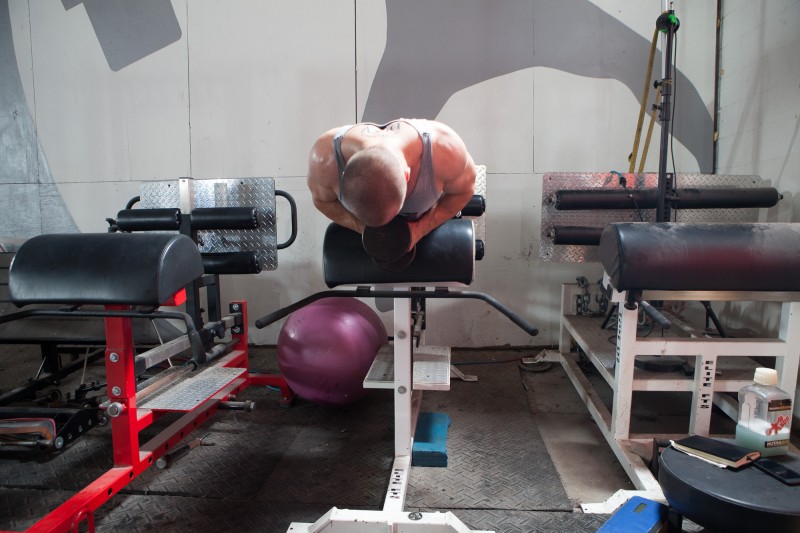
Cassie Prenger
Performance Coach at PLAE Hard (and a BAMF)
- Overhead Backwards Throw
- Front Squat
- Nordic Hamstring Curls
- Pull-Ups
- Swiss Bar Incline Press
- The overhead backwards throw trains triple extension. You don't have to use Olympic lift to teach and train triple extension. It is a very simple dynamic movement and you can manipulate it in any way.
- The front squat is to train the lower body. I choose front over back squat for safety issues. It only takes one person to front squat and dump the bar if needed, rather than two to three people to back squat, in hopes the spotters are paying attention and can spot properly
- The biggest bang for your buck of pulls is pull-ups. It trains the lower back and grip and you can throw different variations of it in.
- I chose the Nordic curl over the GHR because when I did Nordic curls with my hamstrings, my athletes felt them in their hamstrings more than when doing the GHR. GHR has a learning curve and in my experience of working with young athletes they simply aren't strong enough to do them and they end up cheating the movement.
- I chose the Swiss Bar because it puts less strain on the shoulder and incline because not many athletes lay and press in their sport. Incline gets the chest and shoulders and the specialty bar gets the triceps.
Nick Courtad
Owner of Courtad Strength Institute and the guy that showed me the ropes when I first got into the field
- Front Squat
- Tire Flips
- Farmers Walks
- Deadlift
- Prowler Push/Pull
- The front squat is a functional movement with reduced spinal loads with all the usual benefits.
- Tire flips are great for explosion. They're my substitution for Olympic lifts. I'm not afraid of doing Olympic lifts, but this just gives athletes a different movement and adds competition.
- I love farmers all year long. Strong grip, strong traps, and a strong midsection are never negatives.
- Deadlifts are used for absolute strength. Sets are reduced in-season but we still go after it all season long. As long as form is tight, I'm not afraid to have my athletes go for it.
- Prowler work is great for overall conditioning and mental and physical strength.
Cass Barrett
Owner of C. Barrett: Core Fit and a very smart guy who thinks outside the box
- Suspension Rows
- Trap Bar Deadlift
- Turkish Get-Ups
- Kettlebell One-Legged Deadlift
- Kettlebell Swings
My list is based on versatility. A lot of stuff can be done with a TRX, trap bar, and a collection of kettlebells. I can train all facets of performance with these pieces. I think you can capture all the variables here: force production, strength, endurance, spine alignment/awareness, hip hinge, rotation, pressing, pulling, lunging, weight distribution, etc. The list is long and distinguished. Thanks for the prompt to pick an exercise. It makes a guy think when he's forced to make the final call.
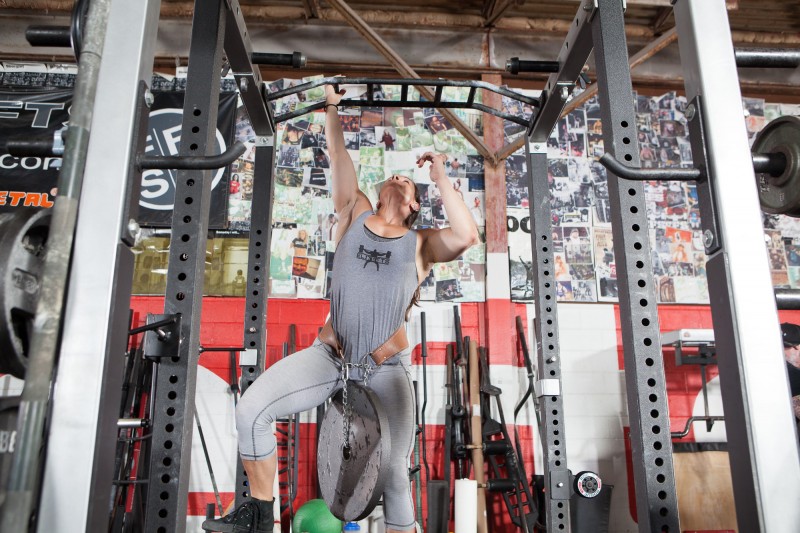
Zach Gallmann
Founder of Finding Strength, social media icon, and the reason I found my way to The Spot Athletics
- Front Squat
- Split Squat
- RDLs
- Single-Arm Dumbbell Rows
- Overhead Press
The first three exercises on my list I think get the most bang for your buck with athletes and clients not looking to compete in powerlifting. I believe that front squats just have a better overall training effect. I chose split squats because they’re dynamic and really help glute and hip issues. RDLs are there to round it all out. I’d rather have a general population client or athlete doing something like RDLs than full-on deadlifts if they can’t do them or they’re in-season. Single-arm dumbbell rows I think are great for back development while making someone brace contralaterally, and I’ve found in my experience that overhead work carries over to upper body and overall strength more so than bench.
Ryan Burgess
Private Strength Coach, a guy who has paid his dues and is finally back to where he belongs
- Front Squats
- Lunges
- Rows
- Push-Ups
- Chin-Ups
I’m biased due to the population I’m working with right now (high school football players with a very low developmental age), so that definitely influenced my responses.
- I like the front squat over the back squat because the thoracic extension, core stabilization, and lower body demands have a more direct transfer to general physical preparedness, which is where we’re lacking. Volume and intensity can be adjusted to use it year round for different short-term objectives, while the overall movement itself still addresses our primary objective, which is to improve global mobility/stability and increase force output.
- In my programming lunges are a catch-all term for walking lunges, stationary lunges, step-ups, and split squats. Where the athlete is in their own development as well as where we are in the annual plan determine the choice. The take-home point is that I think unilateral work is critical from relative strength, injury prevention, and movement efficiency standpoints for field sport athletes, so if I have to pick one I’m going lunge.
- I prefer inverted bodyweight for developing relative strength and bent-over barbell or dumbbell rows as mass builders and to build the foundation for pressing in the future.
- Our kids have such low general physical preparedness that getting them to do proper push-ups right now is huge. Relative strength and core stability are what we’re trying to improve.
- Chin-ups are great for relative strength, mass building, and developing an eventual pressing platform.
If I could add a sixth, it’d be a bilateral hamstring exercise: the Nordic hamstring curl, GHR if available, or reverse leg curls (feet on furniture movers, knees bent, hips in extension, back on the floor, then slowly lowering hips to the ground while simultaneously extending knees).
Shawn Pitcher
Performance Specialist at Nationwide Children’s Hospital and Nutritionist
- Front Squat
- Single Arm Dumbbell Rows
- Half-Kneeling Dumbbell Shoulder Press
- Carry Variation
- GHR
- The front squat is good for less axial loading that will help ensure better spine health for the athlete, hip mobility, and forces the athlete to sit back and down.
- A single-arm dumbbell rows is a great movement for developing the back. The athlete has to incorporate stabilizing on one-arm, bracing to keep the spine flat, and activation of the glutes all while rowing.
- I keep all of my athlete's shoulders in a neutral grip position for pressing and dumbbells are good for this. I feel these keep their shoulders in a safe position without continuously jamming their humeral head into its socket doing military press and developing impingement. Adding the dumbbell while pressing works the anti-rotation/flexion/extension concept while improving vertical upper body press strength and glute activation, since it's in a half-kneeling position. I like starting a lot of movements from the ground because if they can control it in a more stable environment on the ground then they will be stronger and more successful when they get to base/standing based movements.
- GHRs are great hamstring and glute developers. I do a lot of three to five second eccentric pulses and also full range of motion with my athletes. I haven't had any reported hamstrings or pulls by the trainers this past year after implementing these.
- Carry variations are great for working anti-rotation, anti-flexion, and anti-extension. It improves grip strength, shoulder stabilization, overall body strength, and lumbar stabilization (I know we all hate the word core).
Kirk Sabalka
Full time powerlifter, part-time Xbox player, and one of the top strength consultants in the country
- Deadlifts
- Pull-Ups
- Floor Press
- Carry
- Jumps
These five exercises together lead to complete development of the body. Deadlift variations are immensely effective in developing the posterior chain, the pull-up is the single best arm-body movement, floor press develops pressing muscles, carries are better than anything else at developing an ironclad midsection (and a midsection that works at high velocity with correct variations) and jumping is the best thing for explosive strength.
Nate Harvey
Executive Equipment Specialist for elitefts and an avid heavy metal fan (the Phil Anselmo of the strength world)
- Box Squat
- Reverse Hyper
- Horizontal Press
- Pull-Up
- Jump/Throw
I picked these five movements because I think they have the biggest impact on keeping us healthy and making us stronger.
Jonathan Minni
Owner of Tri-State Strength & Performance Center
- Pull-Ups
- Inverted Row
- Split Squat
- Swings
- Landmine Press
I feel like these are fairly simple movements. Swings might be an exception, but once the athletes are competent with a hinge, they should have it down. I use these movements no matter what level and no matter what phase. They cover pretty much the whole body. I feel I could make a solid program for anyone from beginner to advanced with just these five movements.
Tim Kettenring Jr
Director of Sports Performance at Loyola University New Orleans
- Medicine Ball Shot Put Throw
- Trap Bar Deadlift
- TRX Power Pulls
- Mini-Band Lateral/45-Degree Taps
- Floor Press
- For the throws, I really like reversing the emphasis of potentiation because I think it sets the table for more motor unit recruitment for maximal and submaximal strength work. I think we need to work in the transverse plane daily as well.
- I chose the trap bar deadlift because of the bang for your buck: squat/hinge, joint angle specificity, grip strength, postural/pillar strength, and chin neutrality.
- TRX power pulls are for unilateral horizontal pulling, thoracic spine mobility, and transverse emphasis.
- Mini-band taps are included because we can never get enough glute/intrinsic hip activation. Frontal plane glute activation is both specific and a little neglected, I think.
- I chose floor press because it gives me a really safe and strong horizontal unilateral pressing pattern where I can add tempo if I want, alternate to get some thoracic rotation if I want, and get kids out of "bench press" mode.
Mark Rodgers
Owner of Austin Simply Fit
- Deadlift
- GHR
- Jumps
- Throws
- Push-Ups
I chose these exercises based on getting the most bang for your buck, training total body power and conditioning with the least cost (chance of injury).
Joe Aratari
Head Strength Coach at Penfield Central School District and Next Level Strength and Conditioning
- Sprint
- Jumps
- Rows
- Overhead Press
- Deadlift
I chose sprints because I think if you just lift and don't apply it to the movement you will not benefit as much. Yes, lifting and strength is the gateway to speed, but you need to sprint to get faster. Jumps are on the list for the elastic component benefits, ACL prevention, and because they're easiest to teach (compared to cleans). I don't know many successful athletes without a solid posterior chain and rows are important for the posterior chain. I prefer overhead press to the bench press for shoulder safety. I also think putting stuff above your head is critical for total body development. Like the rows, the deadlift's purpose is to build the posterior chain. It works great for training grip too.










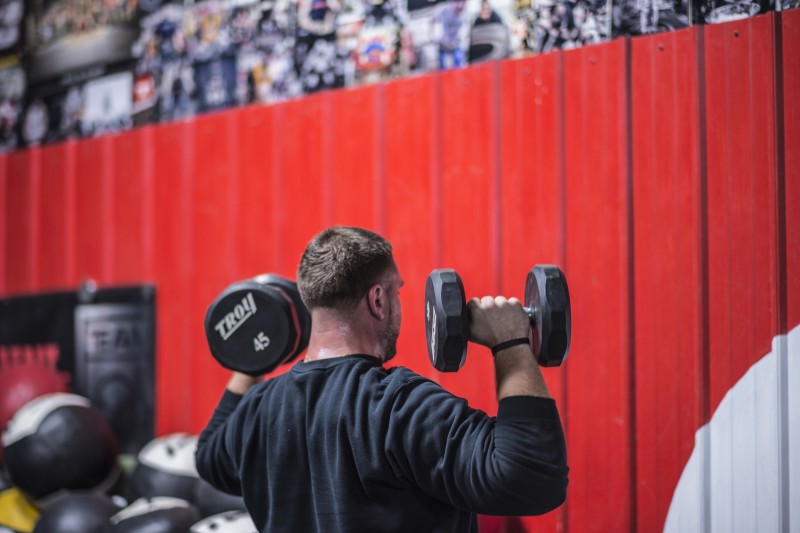
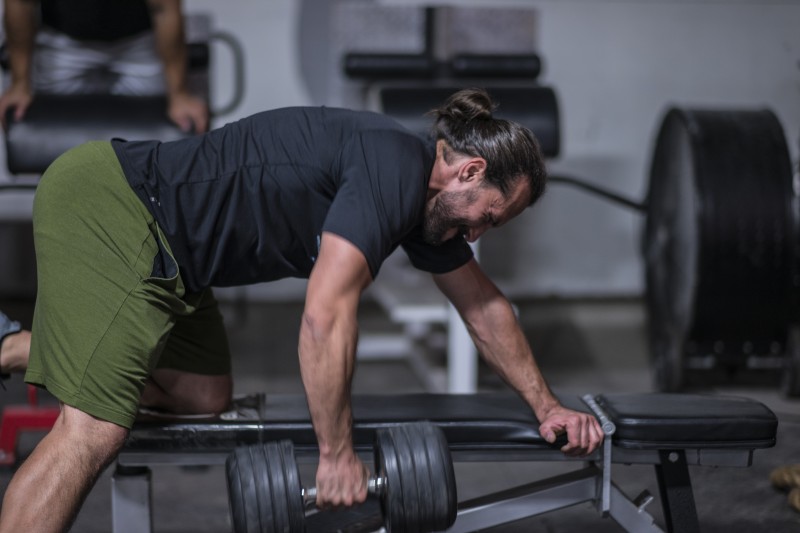
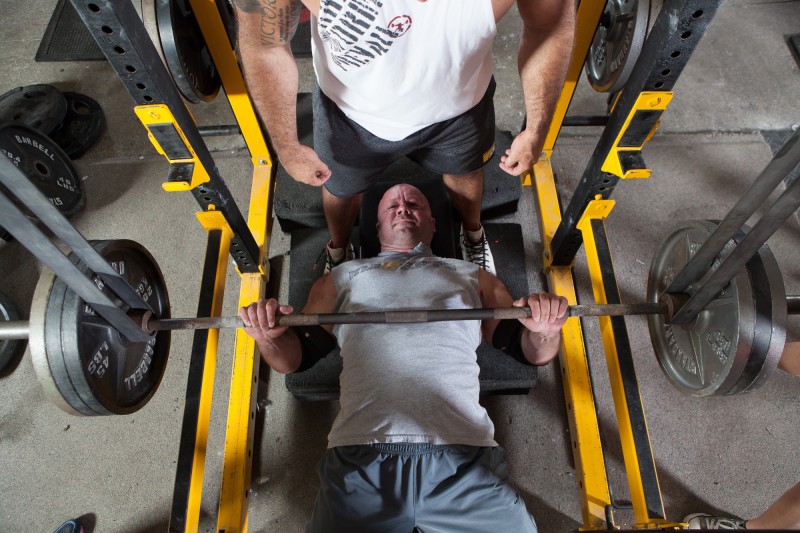
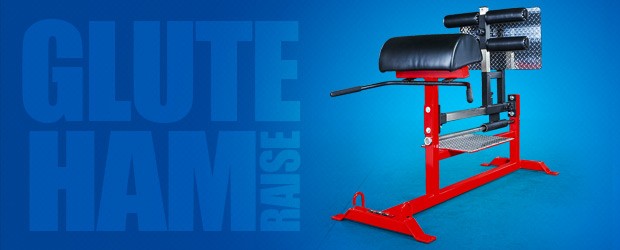
2) Deadlift
3) Press (overhead locked knees)
4) Bench press
5) Chin up
The above exercises (all barbell) provide the most bang for the buck and work every muscle in the body. The most weight moved by the most muscle mass over the greatest distance builds strength. If one has the strength, combined with sports specific practice outside the gym, one creates the strongest and best athletes. Setting skill aside, stronger athletes usually win. Even without the sport, these five exercises are the meat and potatoes of bodybuilding or general strength (and fitness) for the layperson.
Coaches these days seem to overly complicate things. This seems to be evidenced in the responses in the article above. Maybe new and shiny is supposedly better. Or variety is cool in this age of split second attention spans and social media followings. Or maybe one wants more gadgets. But a bar, weights, power rack, and bench is all that is needed.
The first four exercises I note have been around for as long as the barbell has existed (bench press probably later as a bench is required) and will always be around. The same cannot be said for new fangled exercises, variations. Assistance exercises should not be the main focus, by definition they are assistance (looking at you GHR). But assistance exercises make for coolness I guess.
2) Deadlift
3) OHP
4) Chin-ups (weighted)
5) Dips (weighted)
Treadmill Sprints (Tabata or 30 seconds on, 30 seconds off)
Front Squat
RDL
Weight vest pushups
Pull up
First of all, I left out many of my favorites. I’m a rugby player and do a lot of “yoke work” — which I’ve come to enjoy. But high pulls, overhead press and face pulls do not make the “5” unfortunately.
I chose front squat because I’ve found it to transfer better to (most) sports than back squats. But this means I need a very hanstrIng-focused version of the deadlift — enter the RDL.
Incline bench and OHP are my favorites, but I wanted an upper body press that incorporates some abdominal work so I chose pushups. When performed correctly they also function as the poor mans plank.
Pull ups are obvious. I think they’re the best upper back/ lay exercise out there.
Tabata treadmill sprints incorporate speed and anaerobic work. In New England winters these are really all I can do for conditioning. After doing 10x Tabata sprints 5-6 days per week I’ve been able to run 3-5 miles and was fit enough to play entire matches without gassing out. I really believe in these.
2- power clean - great for generating explosive power and upperback/shoulder
3- push press - upper body strength and rigidity/strength from top to bottom
4- BB back squat - max bang for your buck
5- chins - program balance, pulling strength, shoulder health
Trap Bar Deadlift
Shoulder Saver Bench
Reverse Hyper
Sled Drags / Pulls
1) Sprint
2) Trap bar Concentric deadlift
3) Russian Curls
4) Perfect Pull Up (handles that rotate)
5) Landmine Kneeling Shoulder Press
1) What do athletes come in here for? To get faster! The fastest RFD you can think of. The only way you get faster in sprinting is… if you actually sprint! We can touch on the mechanics as we go through also.
2) When I think of a deadlift now to what I though back then, it is different. I know how universal it is and is the easiest to teach for all ages and sports. It’s a full body exercise and it benefit more with a grip and back than a squat to me. Also, concentric only because less tearing of the fibers but at the same time you can still get: triple extension, RFD and pull as heavy as you want with less of a chance of a back injury.
3) This will develop a great posterior chain and be good for making a bulletproof hamstring. It could be hard to modify for someone since they will give out half way though, but less lumbar extension/ ant tilt compared to the GHR.
4) A compound movement I prefer to build relative upper-body strength compared to absolute strength. Having the freedom with the handles can help put the shoulders in the strongest position naturally. Let alone still getting the upper back, and lat, shoulders in a pulling motion. Weaker kids can rep out eccentrics if they struggle. (that is if temp is allowed with the rules).
5) I like all the reasons with Eric Cressey, dynamic scapular work that lacks with other push exercises, while being able to load up for strength. The bar path is better on the shoulder and is a slightly different vector to my vertical pull (Perfect pull up). Why not?
1. Farmer walks
Nothing puts more stress on my clients than walking with a heavy load and keeping their body tention.
2. Squats
The first movment we do as humans when we get on our two feet the first time. Its a action we perform every day. Why shouldn't we make sure our clients get stronger at it?
3. Chin Up
Now you may not hang every day at some dangerous cliff and have to pull yourself up but it sure is a great movment.
4. Deadlift
Lifting stuff from the floor. If made correctly it works for my grandma and your toplevel athlete.
5. Overhead Press
I prefer this one over the bench press. Not because of the shoulder health but you have to focus more on the bracing and your whole posture while moving a weight over your head.
2. Standing Press
3. RDL's
4. Chin-Ups
5. Farmers Walk
Call me a Dan John disciple here, but you cannot go wrong with these five basic human movements if that is all I can do. If I am dealing with a population of athletes I am going with the trap bar DL over the traditional squat variations out of safety and simplicity of the movement. The others are fairly straight forward. I nearly went with front rack carries over the traditional farmers walk but could not pull the trigger.